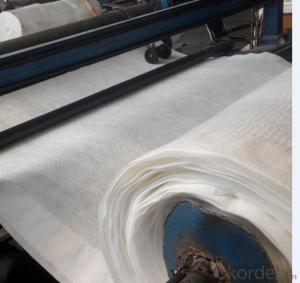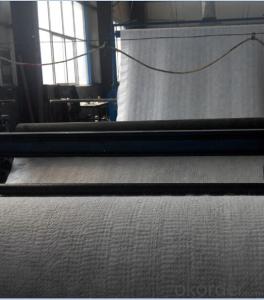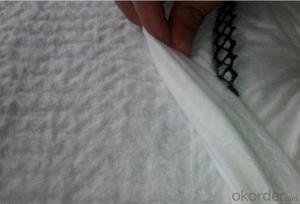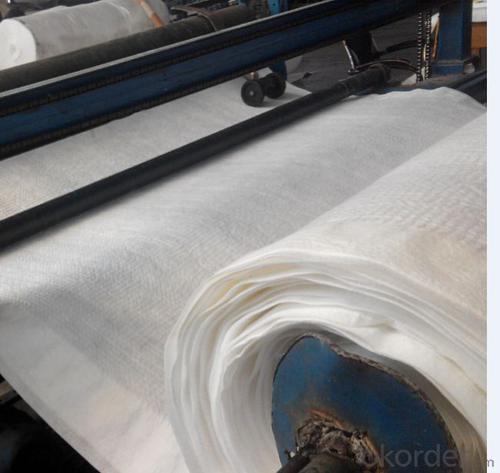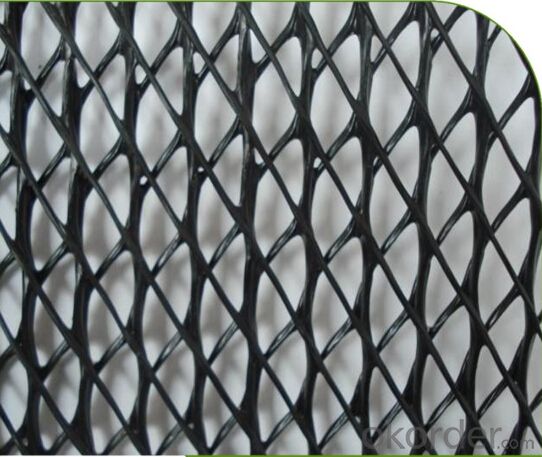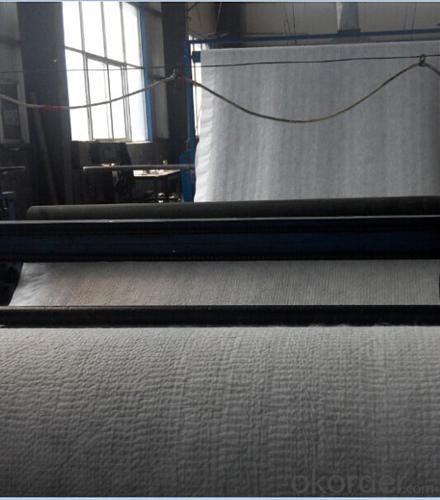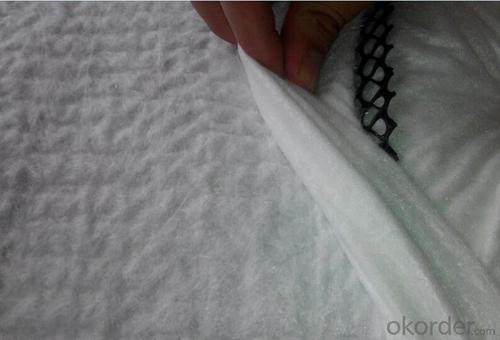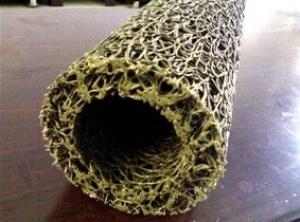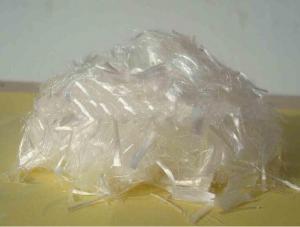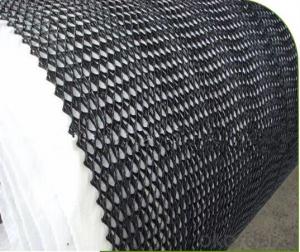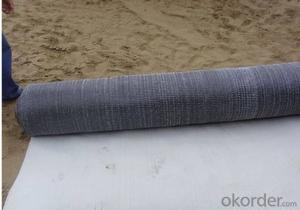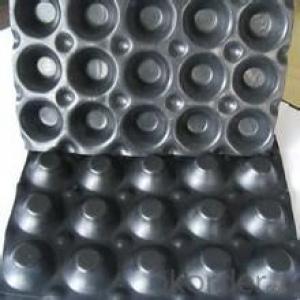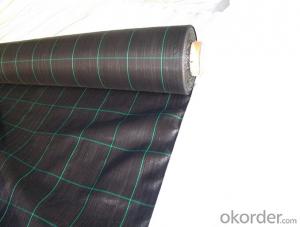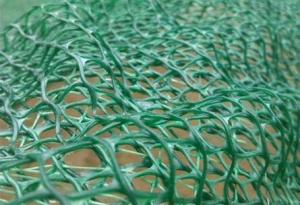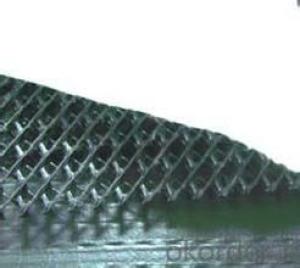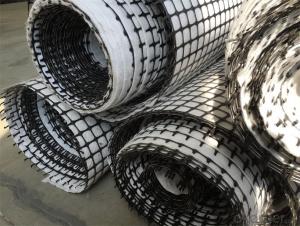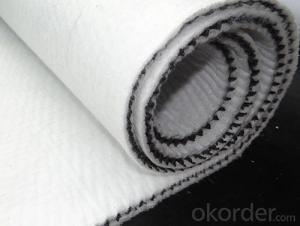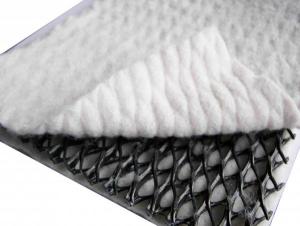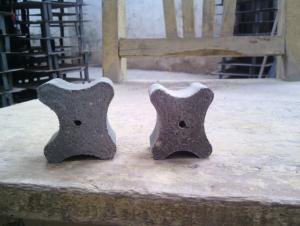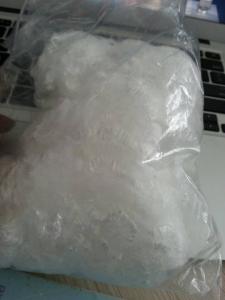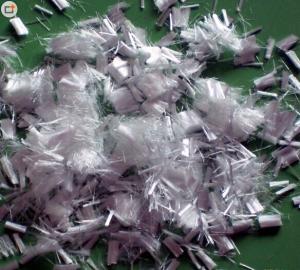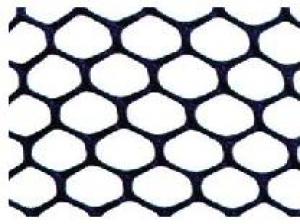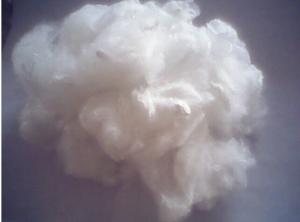Tri Geocomposite Drainage Net for Slope Protection
- Loading Port:
- Qingdao
- Payment Terms:
- TT OR LC
- Min Order Qty:
- 2000 m²
- Supply Capability:
- 200000 m²/month
OKorder Service Pledge
OKorder Financial Service
You Might Also Like
Tri Geocomposite Drainage Net for Slope Protection
Brief Description:
Geocomposite drainage is a drainage system consisting of three-dimensioanal high-density polyethylene
geonet, with high permeability, compressive strength and tensile strength, combined on one or both sides with
a nonwoven polypropylene geotextile.
Features:
Cost Effective - drainage nets can replace one or more feet of conventional aggregate drainage, increasing space within the landfill, allowing for additional revenue generation.
Versatility - drainage nets can be installed on steep slopes or against vertical walls where conventional drainage aggregates cannot be used.
Chemical Resistance - drainage nets exhibit the same chemical and biological resistance as the HDPE geomembrane.
Specifications and technical parameters:
Drainage network core | units | Specification | ||||
Unit weight | g/m2 | 750 | 1000 | 1300 | 1600 | |
Thickness | Mm | 5.0 | 6.0 | 7.0 | 7.6 | |
Hydraulic conductivity | m/s | kx10-4 | Kx10-4 | Kx10-4 | Kx10-4 | |
Elongation | % | 50 | 50 | 50 | 50 | |
Tensile strength (core netwaork) | kN/m | 8 | 10 | 12 | 14 | |
Geotextile | g/m2 | Heavier grades of geotextiles can be bonded to geonet on request | ||||
Usages:
In the railway, highway and other transportation infrastructure, drainage system safety and the service life
of the project and its have inseparable relationship, in which the geotextile material is an important part
of drainage system, the drainage effect of 3D composite drainage net is particularly notable. mainly
used for tunnels, municipal engineering, reservoir, revetment in drainage engineering.
FAQ
1.What is geosynthetics ?
Geosynthetics form a perfect erosion control fabric used extremely widely in civil engineering to stabilize and reinforce slopes and soil under or next to roads, railways, dams, water reservoirs etc.. They can be easily applied which minimizes the time of construction, as well as they limit the resources and materials necessary.
2.What kinds of geosynthetics we have ?
Non-woven geotextile, geogrids, geocells, GCL, Geomembranes, Geonets, Geocomposites etc .
3.What is the geosynthetics used for ?
Hydraulic
Lagooning and Water Treatment, Ornamental Ponds, Golf Courses
Aquaculture and Desalination,Water Lagoons,Tanks, Reservoirs, Liquid Waste,Floating Cover Solutions
Environment
Civil Works
Edification
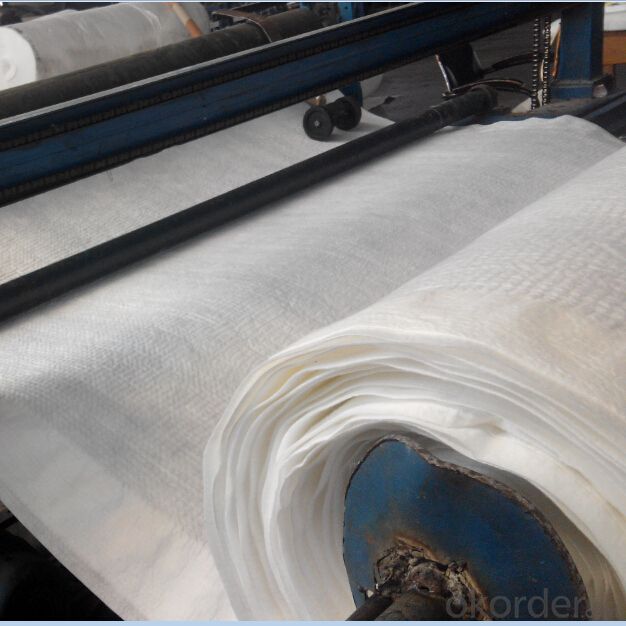
- Q: Civil engineering, machinery, materials and finance which relatively good employment? Good job prospects?
- Civil, mechanical two professional jobs are very good. Civil engineering is mainly the construction industry, China is currently in full construction, this talent is needed, as long as not afraid of fear is not tired of work or very good looking.
- Q: How do geosynthetic products contribute to soil erosion prevention in agricultural fields?
- Geosynthetic products such as geotextiles, geogrids, and geocells help prevent soil erosion in agricultural fields by providing reinforcement and stabilization to the soil. These products are placed on the ground surface or beneath it to control water flow, reduce soil movement, and promote vegetation growth. They act as a barrier, preventing soil particles from being washed away by rain or irrigation, and also help in retaining moisture and nutrients necessary for plant growth. Overall, geosynthetic products play a crucial role in protecting agricultural fields from erosion, ensuring sustainable farming practices.
- Q: What are the different types of geotextile fabric properties?
- The different types of geotextile fabric properties include filtration, separation, drainage, reinforcement, and protection.
- Q: What are the different types of geosynthetic reinforcements for embankments?
- There are several types of geosynthetic reinforcements commonly used for embankments, including geogrids, geotextiles, geocomposites, and geocells. Geogrids are high-strength woven or knitted structures that provide tensile reinforcement to the embankment. Geotextiles are permeable fabrics that help with filtration, separation, and drainage within the embankment. Geocomposites are combinations of geogrids or geotextiles with other materials, such as geomembranes, to provide additional functionalities. Geocells are three-dimensional honeycomb-like structures that confine and stabilize the soil, improving overall stability.
- Q: What are the different installation guidelines for earthwork products?
- The installation guidelines for earthwork products may vary depending on the specific product being used. However, some general guidelines include preparing the site by clearing it of any vegetation or debris, ensuring proper drainage, and compacting the soil. It is important to follow manufacturer instructions for the specific product, which may include steps such as excavating the area to the required depth, installing geotextiles or geogrids for reinforcement, and properly backfilling and compacting the material. Additionally, it is crucial to consider factors like climate, soil conditions, and load requirements when determining the installation guidelines for earthwork products.
- Q: Help students learn sister, civil engineering materials
- Inorganic cement, cement, concrete, mortar, steel, masonry, wood, synthetic polymer, waterproof material, decorative materials.
- Q: How do earthwork products help with bank stabilization?
- Earthwork products such as geotextiles, geogrids, and erosion control blankets play a crucial role in bank stabilization. These products help by reinforcing the soil, preventing erosion, improving slope stability, and promoting vegetation growth. Geotextiles act as a filter, allowing water to drain through while retaining soil particles, reducing the risk of erosion. Geogrids provide structural support to the soil, increasing its stability and preventing slippage. Erosion control blankets create a protective layer on the bank, preventing rainfall from directly impacting the soil and promoting vegetation growth, which further helps stabilize the bank by binding the soil together with its root network. Overall, earthwork products significantly contribute to bank stabilization by enhancing the bank's structural integrity and resilience against erosion.
- Q: Are earthwork products resistant to chemicals and pollutants?
- Yes, earthwork products are generally resistant to chemicals and pollutants. They are commonly made from natural materials such as clay, soil, and rocks, which have inherent properties that make them less susceptible to chemical reactions or degradation caused by pollutants. However, the specific resistance may vary depending on the type of earthwork product and the specific chemicals or pollutants involved.
- Q: Can earthwork products be used in flood control systems?
- Yes, earthwork products can be used in flood control systems. Earthworks involve the manipulation of soil and other materials to create structures like berms, levees, and floodplains, which are essential components of flood control systems. These structures help to redirect, contain, or absorb excess water during periods of heavy rainfall or flooding, thereby reducing the risk of damage to surrounding areas.
- Q: What are the benefits of using geocells in green infrastructure projects?
- There are several benefits of using geocells in green infrastructure projects. Firstly, geocells provide structural support and stability to vegetated surfaces, preventing soil erosion and promoting healthy plant growth. Secondly, they enhance stormwater management by improving infiltration rates and reducing runoff, thus mitigating the risk of flooding. Additionally, geocells help to create a more sustainable environment by using recycled materials in their construction and reducing the need for non-renewable resources. Lastly, these geosynthetic materials are cost-effective, easy to install, and require minimal maintenance, making them an efficient solution for green infrastructure projects.
Send your message to us
Tri Geocomposite Drainage Net for Slope Protection
- Loading Port:
- Qingdao
- Payment Terms:
- TT OR LC
- Min Order Qty:
- 2000 m²
- Supply Capability:
- 200000 m²/month
OKorder Service Pledge
OKorder Financial Service
Similar products
Hot products
Hot Searches
Related keywords
